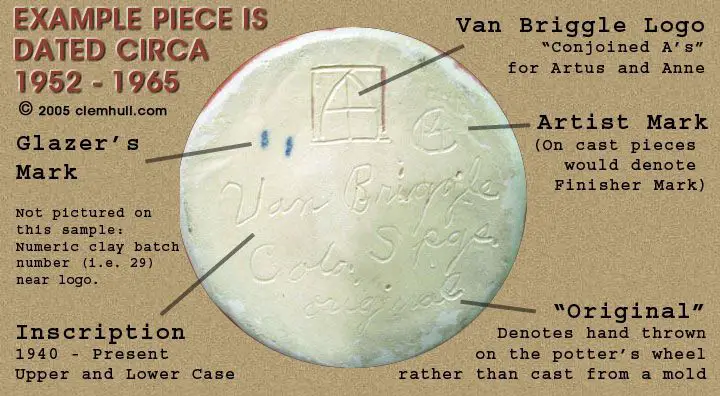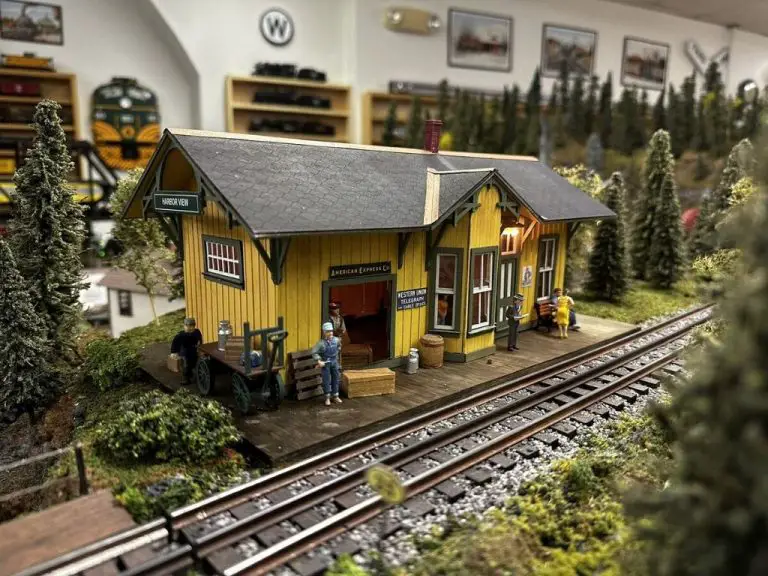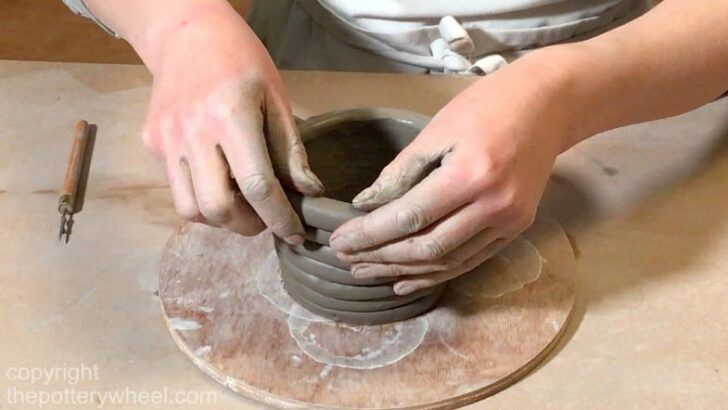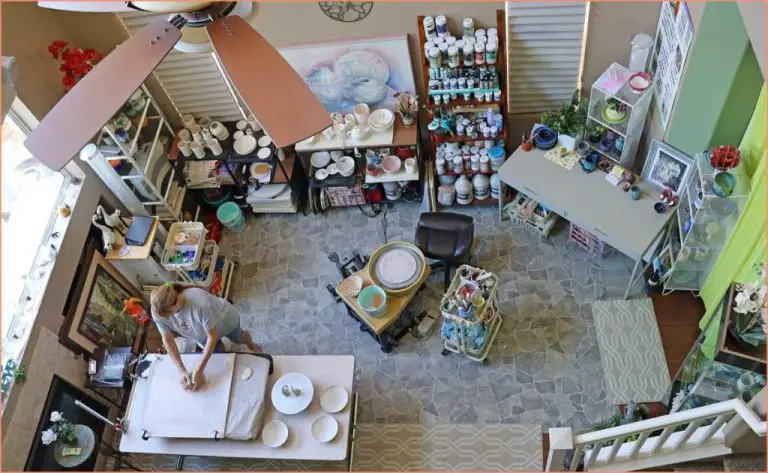How To Value Van Briggle Pottery?
Van Briggle pottery has a long and rich history as a sought-after American art pottery. The company was founded in 1901 in Colorado Springs by Artus Van Briggle, who developed innovative techniques like applying colored clays to the surface of the pottery. Van Briggle pottery pioneered the matte glaze style and are known for their distinctive designs often incorporating Art Nouveau and Native American influences.
Today, Van Briggle pottery from the early years is highly coveted by collectors and antique dealers. Pieces are exhibited in major museums like the Metropolitan Museum of Art. The unique shapes, innovative techniques, and Art Nouveau designs make Van Briggle one of the most collectible art pottery brands.
Identify the Piece
To properly identify a piece of Van Briggle pottery, look for distinguishing marks like stamps, signatures, numbers, and dates. According to JustArtPottery, pieces produced between 1900-1907 were often clearly dated with marks containing the “AA” logo, company name, roman numerals, dates, and stamped shape numbers.
Pieces made after 1908 will have the vase shape and production date, according to ClemHull.com. Later pieces have a cursive V with B inside logo indicating Van Briggle. It’s also common to find artist initials, finisher initials, and batch numbers on the bottom.
Examine the color, glaze, and design style for clues. Matte finishes in earthy hues of green, brown, and blue on simple floral shapes are typical of Van Briggle. Distinctive clumpy “volcanic” glazes and Art Nouveau designs help authenticate pieces.
Research the Design
One of the first things to do when researching the value of a Van Briggle piece is to find examples of similar pieces to get an idea of rarity and demand. Van Briggle pottery is known for its unique Art Nouveau and Art Deco inspired designs featuring natural motifs like flowers, trees, and animals. Many of the designs were inspired by the Colorado landscape and native wildlife.
For example, the Poppies vase design is one of Van Briggle’s most iconic patterns featuring stylized poppy flowers (https://www.kirklandmuseum.org/collections/work/table-lamp-body-is-poppies-vase-no-143/). Since it is a classic and well-known pattern, similar Poppies vases tend to have a higher value and demand among collectors. More unusual or rare designs may be worth less. Browsing auction records and museum collections can provide a sense of the relative rarity and value of different Van Briggle designs.
Consider the Condition
The condition of a Van Briggle pottery piece can greatly impact its value. Assess any damage, repairs, or modifications carefully. Chips, cracks, fading, and repairs like gluing pieces back together can decrease value. You can follow these tips to evaluate condition:
- Examine the piece closely under good lighting to spot any hairline cracks, small chips, crazing, discoloration etc. Major damage like missing pieces will be more obvious.
- See if the piece has any restoration or repairs done like regluing broken parts. Repairs are usually visible under close inspection. They can decrease value but some collectors don’t mind them.
- Check the bottom and rim areas in particular for damage since they are vulnerable parts. Also look inside hollow pieces like vases.
- Consider the glaze condition – is it still glossy and vibrant? Fading and dullness negatively impacts decorative value.
- Assess if the piece retains its structural integrity and stability. Major warping suggests compromised sturdiness.
In general, damage decreases market value unless the piece is very rare. But minimal wear may be expected in antiques. Document all condition issues when appraising.
Verify Authenticity
Authenticating Van Briggle pottery is key to properly valuing the piece. There are a few ways to confirm it is a genuine Van Briggle piece:
Look for the raised VB seal stamped on the bottom, along with the shape number and impressed date (pre-1920 pieces). According to https://www.realorrepro.com/article/Van-Briggle-Pottery, this seal is one of the easiest ways to identify an authentic Van Briggle.
Examine the glaze for the characteristic cracking called “crazing” found on Van Briggle wares. This crazing occurs during firing and is difficult to duplicate, making it a sign of authenticity.
Review the markings and signatures, which can help date the piece. Earlier pieces feature the intertwined AA Van Briggle monogram, while later pieces after Artus Van Briggle’s death in 1904 just contained “Van Briggle”.
Compare the shape number on the bottom to known Van Briggle forms in guides like those at https://www.realorrepro.com/article/Van-Briggle-Pottery. Matching a shape number to a documented form indicates authenticity.
Consult an expert appraiser specializing in Van Briggle. They can examine details like the clay, glaze, crazing, and markings to definitively authenticate the piece.
Recent Sales Data
Once you’ve identified key details about your Van Briggle pottery piece, the next step is to research what similar items have sold for recently. This will help you establish a realistic fair market value.

Search auction archives and online sales platforms like eBay, LiveAuctioneers, and Invaluable to find completed listings for comparable Van Briggle pieces. Look for items made in the same year, with similar colors, shapes, motifs, markings, and sizes. The more similarities, the more relevant the sale price will be.
Make note of the actual sold prices, not just the initial asking prices. Watch out for outliers or anomalies – an unusual high or bargain low sale may not represent the standard market value. Focus on the overall range and average sales prices for truly comparable pieces.
Examining recent sales data allows you to anchor your pricing to real-world examples. While appraisals also play a role, actual market sales carry significant weight in determining what collectors are currently willing to pay.
Establish a Price Range
After thoroughly researching sales records and auction prices for similar pieces, you can begin to establish a reasonable estimated price range for your Van Briggle pottery. Look at the high and low ends of prices for comparable pieces based on size, color, condition, age and other attributes. This will give you a good sense of the current market value.
Be sure to note any exceptional or rare qualities about your piece that could potentially push it to the higher end of the range. For example, unusual glazes, uncommon shapes, and one-of-a-kind designs tend to increase value for collectors. On the other hand, damage, repairs, and excessive wear will lower the price.
It’s always best to establish a range rather than settling on a single estimated price. The market fluctuates over time and no two pieces are exactly alike. By determining a flexible fair market value range, you account for these variables.
With thorough research as your guide, you can realistically assess the monetary value of your Van Briggle art pottery based on current sales data. This will empower you to make informed decisions about selling, insuring or simply appreciating your unique piece.
Get Professional Appraisals
For very valuable Van Briggle pieces, it is wise to get multiple professional appraisals. Professional appraisers have extensive knowledge and experience determining fair market values for rare pottery. They will thoroughly inspect the piece to identify any markings, damages, repairs, or alterations. Appraisers consider the rarity of the shape and glaze, production totals, demand in the current market, historical significance, and provenance. For extremely valuable Van Briggle pottery worth tens of thousands of dollars or more, get appraisals from 2-3 reputable experts before deciding on a value or selling the piece. This provides a balanced perspective and range for the estimated value. Some professional appraisal services to consider using for valuable Van Briggle pottery include Dr. Lori, Value My Stuff, and appraisers certified by the American Society of Appraisers.
Decide Whether to Keep or Sell
The decision of whether to keep or sell your Van Briggle pottery can be difficult. Here are some factors to consider:
Emotional value – Do you have a strong personal attachment to the piece based on who gave it to you or the memories associated with it? Pieces with high sentimental value are often worth keeping in the family.
Investment potential – Has the monetary value increased substantially since you acquired the piece? Does it have potential to gain even more value over time? Items perceived as good investments may be better to hold onto.
Needed funds – Do you need money for a major purchase or expense? Selling more valuable antiques can provide necessary funds in challenging financial times.
Display space – Do you have adequate shelves, cabinets or tabletops to properly exhibit the piece? If it can’t be displayed, its value is diminished as a decorative object in your home.
Burden on heirs – Will future generations care for antique pottery or find it a burden? Selling frees them from hassles of storage, cleaning, insurance, etc.
Assessing these personal factors allows you to make the right individual choice on whether to retain or sell your Van Briggle pieces.
Conclusion
Determining the value of Van Briggle pottery requires a multi-step process. First, carefully examine the piece to identify the design, date of production, markings, and any signatures. Research the history of the pattern or shape to understand its rarity and collectability.
Next, thoroughly assess the condition, looking for any chips, cracks, restoration or damage that could decrease value. Verify that all marks and stamps are consistent with Van Briggle pieces from that era through comparison and expert authentication.
With an understanding of the piece’s characteristics, look to recent sales data of comparable Van Briggle pieces to establish a price range. Get professional appraisals to hone in on a fair market value. Consider demand trends for American Art Pottery and Van Briggle.
Finally, decide whether to keep the Van Briggle pottery in a collection or sell it. Proper identification, research, verification and expert consultation are key to accurately valuing these historic American ceramic works.




